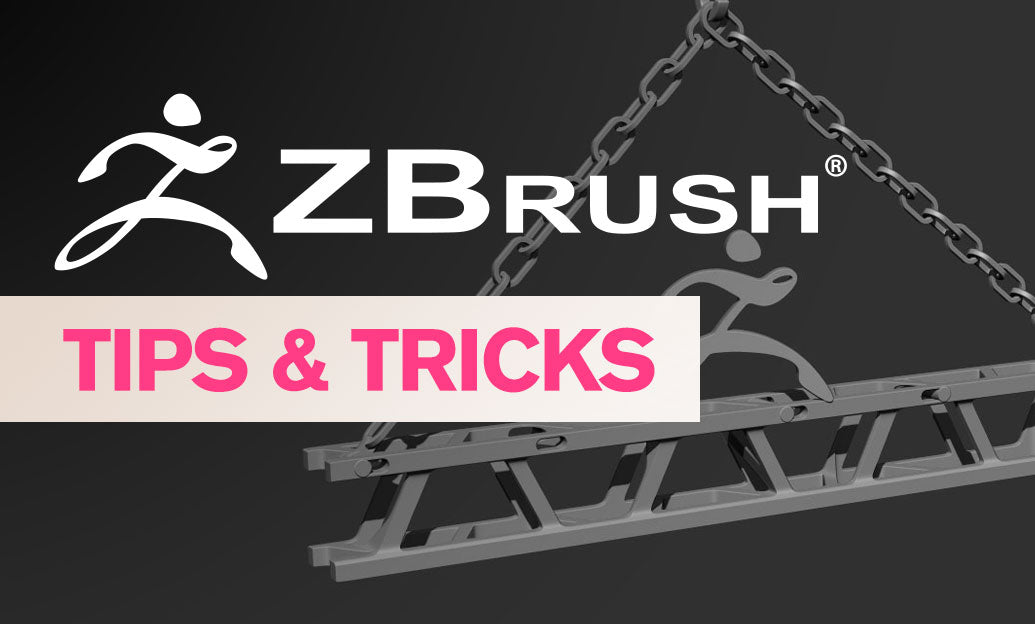Your Cart is Empty
Customer Testimonials
-
"Great customer service. The folks at Novedge were super helpful in navigating a somewhat complicated order including software upgrades and serial numbers in various stages of inactivity. They were friendly and helpful throughout the process.."
Ruben Ruckmark
"Quick & very helpful. We have been using Novedge for years and are very happy with their quick service when we need to make a purchase and excellent support resolving any issues."
Will Woodson
"Scott is the best. He reminds me about subscriptions dates, guides me in the correct direction for updates. He always responds promptly to me. He is literally the reason I continue to work with Novedge and will do so in the future."
Edward Mchugh
"Calvin Lok is “the man”. After my purchase of Sketchup 2021, he called me and provided step-by-step instructions to ease me through difficulties I was having with the setup of my new software."
Mike Borzage
ZBrush Tip: Topology Brush — Fast Quad Retopology Directly on Sculpt
November 24, 2025 2 min read

Use the Topology brush to sketch clean, production-ready quads directly on any surface. It’s fast, intuitive, and ideal for patching problem areas, building clean retopo over scans, or crafting precise hard-surface panels.
- Access: Press B, then T, then O to select the Topology brush.
- Reference Surface: Make your high-res sculpt the active SubTool. Enable PolyFrame (Shift+F) to visualize flow while drawing.
- Draw Size = Density: The brush’s Draw Size controls quad density. Smaller size = tighter quads; larger size = broader strips.
- Symmetry: Turn on X symmetry before drawing to generate mirrored topology automatically.
Workflow
- Sketch guides: Click-drag to lay down curves. Intersections form quad patches; keep strokes clean and logical.
- Edit quickly:
- Alt+click a segment or point to delete.
- Click on a curve to insert a point and refine corners.
- Click-drag from existing points to extend flow.
- Preview mesh: Press A to preview the generated topology. Press A again to return to curves for adjustments.
- Accept: When satisfied, press A to preview, then click on the surface to commit. ZBrush creates a new SubTool with your topology.
Thickness and panels
- For thin shells or panels, open Brush > Modifiers and set Thickness above 0 before previewing with A.
- Great for rapid hard-surface paneling directly on a concept sculpt without leaving ZBrush.
Clean topology tips
- Favor quads: Keep strokes forming four-sided patches whenever possible to avoid pinching.
- Guide the flow: Align strokes along natural muscle flow, panel seams, and curvature changes.
- Use polygroups: New patches typically respect flow; assign polygroups afterward for easy isolation and ZRemesher KeepGroups refinement.
- Density strategy: Use lower density for broad forms, then add localized higher density in high-curvature or deformation-prone areas.
Integrating with the rest of your pipeline
- Project details: After accepting the new mesh, subdivide and use Project All to recover high-frequency detail from your original sculpt.
- UVs later: Block topology first, then run ZRemesher (with Keep Groups) if needed, followed by UV Master for quick unwraps.
- Export assets: Generate normal and displacement maps from your subdivided retopo for efficient rendering in DCCs.
Troubleshooting
- Gaps or overlaps on preview: Clean intersections, delete stray points (Alt+click), and ensure continuous loops.
- Unexpected density: Adjust Draw Size and rebuild small areas; it’s often quicker than forcing edits.
- Surface adherence issues: Make sure curves snap to visible geometry and avoid hidden/overlapping subtools during drawing.
Pro moves
- Mix with Slice/Trim brushes to define sharp boundaries before topology sketching.
- Combine with Live Boolean panels built via Thickness for quick concept variations.
- Create modular patches you can reuse across similar assets.
Looking to add ZBrush or expand your seat count? Explore licenses and expert advice at NOVEDGE. For current Maxon offerings, including ZBrush, check NOVEDGE’s Maxon collection.
You can find all the ZBrush products on the NOVEDGE web site at this page.
Also in Design News

AutoCAD Tip: Avoid EXPLODE: Preserve Block Intelligence and CAD Standards
November 24, 2025 2 min read
Read More
V-Ray Tip: V-Ray Adaptive Dome Light: Cleaner, Faster HDRI Lighting
November 24, 2025 2 min read
Read MoreSubscribe
Sign up to get the latest on sales, new releases and more …



